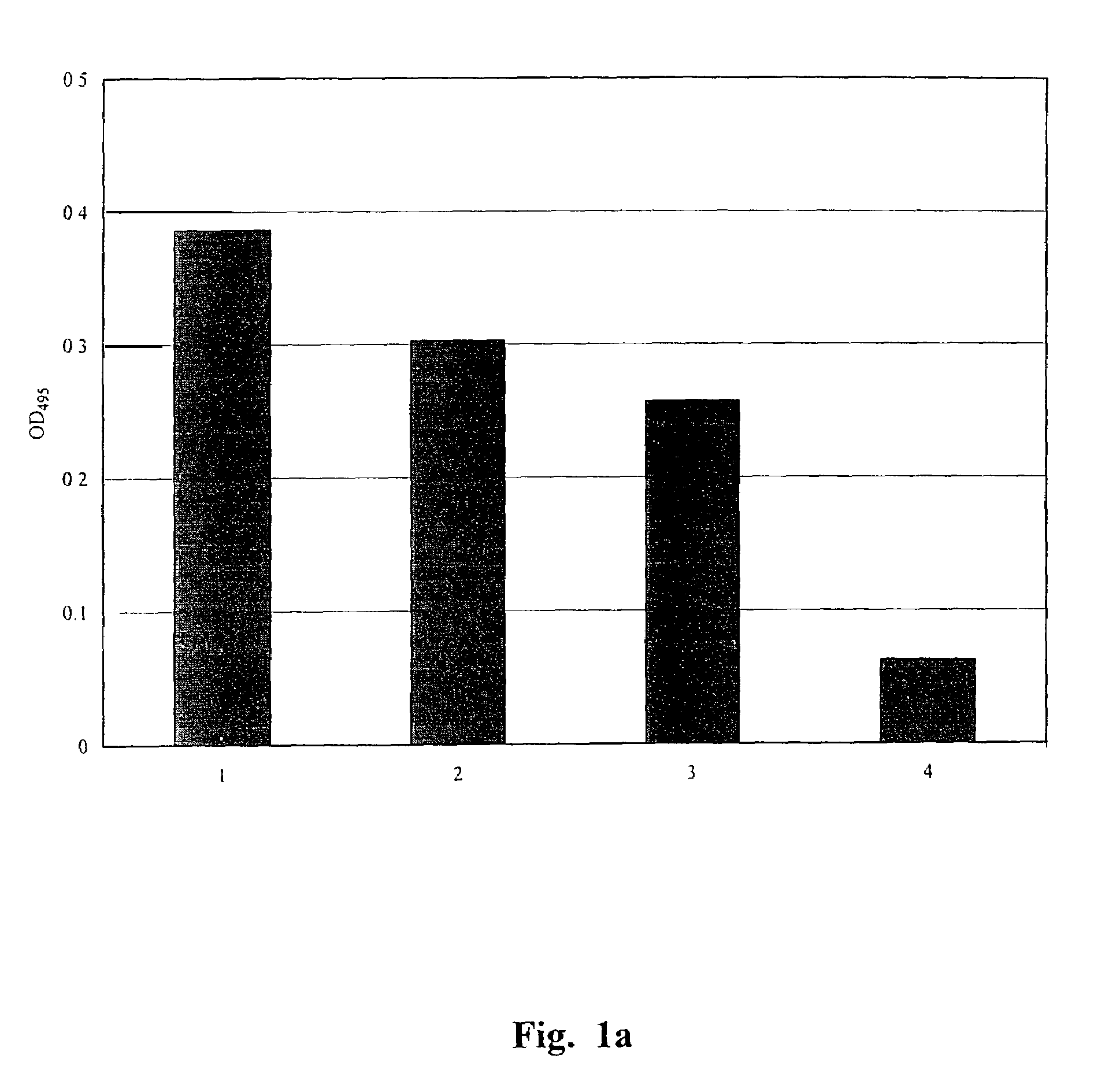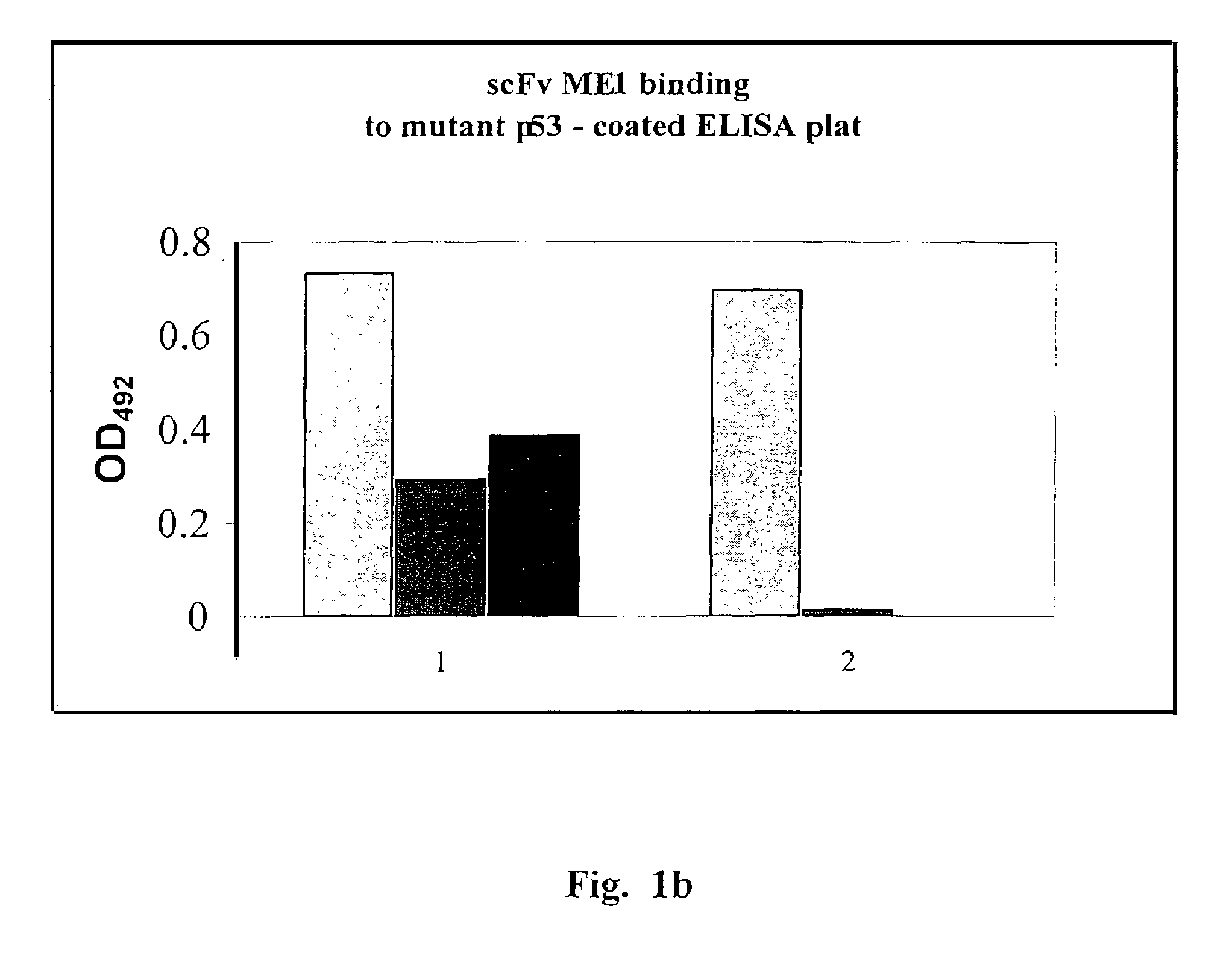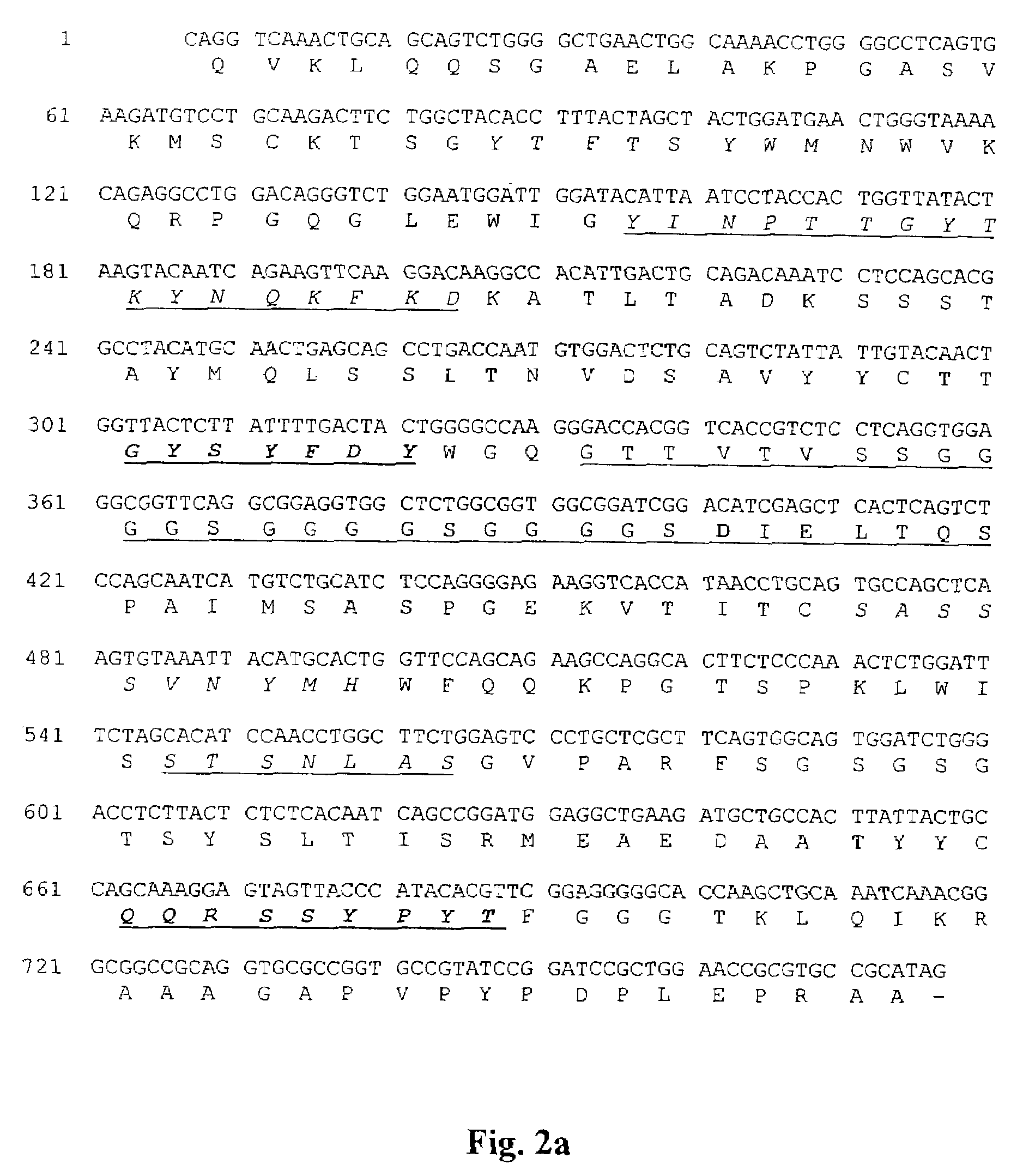Single chain antibody against mutant p53
a single-chain antibody and mutant p53 technology, applied in foreign genetic material cells, biochemistry apparatus and processes, sugar derivatives, etc., can solve the problems of non-functionality and prone to rapid degradation, and achieve the effect of reducing the level of mutant p53, broadening the range of possible tumor targets, and enhancing specificity and effectiveness
- Summary
- Abstract
- Description
- Claims
- Application Information
AI Technical Summary
Benefits of technology
Problems solved by technology
Method used
Image
Examples
Embodiment Construction
A. MATERIAL AND METHODS
[0060]I. Covalent-coupling of the epitopic peptide to microfiter plates
[0061]Originally, the KFRHSVV heptapeptide (SEQ ID NO: 5) was obtained as a crude preparation after the peptide synthesis at Weizmann Institute. The N-terminal lysine (K) was added to the native hexapeptide sequence in order to facilitate a covalent coupling through an e-amino group of the lysine to the active groups of the solid support.
[0062]Peptide purification was performed on the Gilson-301 HPLC chromatographer (Gilson, France) using the 5 μm Lichrosorb RP-18 column (Dr. Herbert Knauer KG, Germany). 1 ml of 1 mg / ml solution of the crude peptide preparation was applied to the column pre-equilibrated with 0.1% trifluoroacetic acid in water (Solution A). The elution was carried out with a linear gradient of 0 to 100% of solution B (80% acetonitrile in solution A) for 70 min at flow rate of 1 ml / min. The effluent was monitored in UV light detector at 230 nm. The peak fractions were pooled ...
PUM
| Property | Measurement | Unit |
|---|---|---|
| flow rate | aaaaa | aaaaa |
| pH | aaaaa | aaaaa |
| temperature | aaaaa | aaaaa |
Abstract
Description
Claims
Application Information
 Login to View More
Login to View More - R&D
- Intellectual Property
- Life Sciences
- Materials
- Tech Scout
- Unparalleled Data Quality
- Higher Quality Content
- 60% Fewer Hallucinations
Browse by: Latest US Patents, China's latest patents, Technical Efficacy Thesaurus, Application Domain, Technology Topic, Popular Technical Reports.
© 2025 PatSnap. All rights reserved.Legal|Privacy policy|Modern Slavery Act Transparency Statement|Sitemap|About US| Contact US: help@patsnap.com



